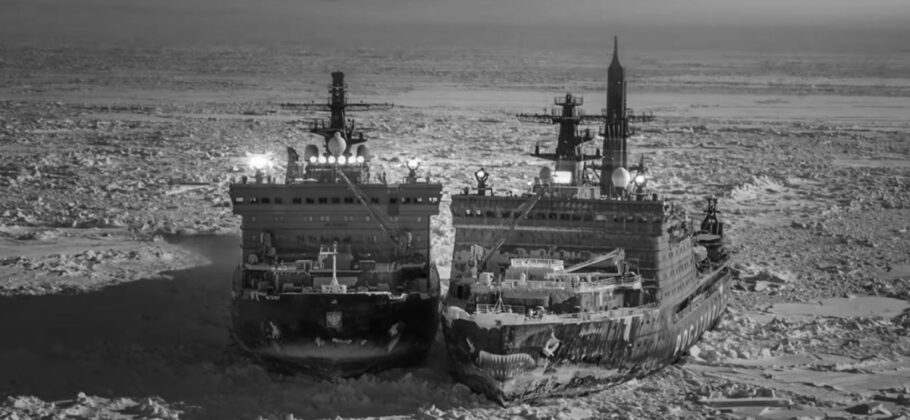The United States and Finland have finalized a $6.1 billion agreement that marks one of the most significant Arctic security partnerships in recent memory. Signed at the White House during President Alexander Stubb’s visit with President Donald Trump, the deal is designed to expand the U.S. Coast Guard’s icebreaker fleet, revitalize domestic shipbuilding, and fortify the northern flank of the NATO alliance.
Under the agreement, the United States will purchase up to four Finnish-built icebreakers—long considered among the best in the world—and then produce additional ships in U.S. shipyards using Finnish blueprints and expertise. The plan is expected to generate thousands of American jobs while strengthening NATO’s ability to operate in one of the most strategically contested regions on the planet.
President Trump called the collaboration a “landmark achievement” that will “help secure the Arctic, create American jobs, and ensure the United States stays ahead of our competitors.” He praised Finland’s world-leading shipbuilding capacity, saying, “We’re buying the finest icebreakers in the world, and Finland is known for making them.” President Stubb, in turn, described the deal as evidence of trust and shared purpose, stating, “Cooperation benefits both countries—Finland and the United States. I am proud that Finnish Arctic know-how is valued and trusted.”
Building a Fleet to Compete in the High North
The new pact builds upon the 2024 Icebreaker Collaboration Effort, or ICE Pact, a trilateral arrangement between the United States, Canada, and Finland. That framework aims to accelerate Arctic readiness and stimulate investment in northern industry. Under its provisions, Finland will construct the first four Arctic Security Cutters, while the United States will build the remaining seven domestically. The goal is to have the first vessel operational by 2028.
Finnish President Stubb recalled that Trump had raised the issue early in their dialogue. “I remember the first conversation when you mentioned that Russia has 40 icebreakers and you need to act more decisively,” Stubb told reporters. His remark highlights how stark the capability gap has become. The United States currently operates just two fully functional icebreakers, while Russia controls dozens, including several powered by nuclear reactors capable of cutting through nearly three meters of ice.
Arctic policy adviser Iris Ferguson said Finland’s expertise now offers NATO a vital advantage. “Arctic know-how, a border with Russia, knowledge of Russia and its intentions and motivations—this is a significant potential for the Alliance and the United States in the Arctic and beyond,” she explained.
Why Washington Sees the Arctic as a Security Frontier
The U.S. Department of Defense’s 2024 Arctic Strategy reframed the High North as a zone of “strategic competition,” linking it directly to national defense, energy security, and economic stability. The document warns that Russia’s and China’s growing presence in the Arctic demands immediate action and closer collaboration with allies. It stresses that “the United States must be ready to meet the challenges together with allies and partners.”
Washington’s current network of Arctic assets includes the Elmendorf-Richardson Joint Base, Fort Wainwright, and Eielson Air Force Base in Alaska, as well as Pituffik Space Base in Greenland. Yet, compared to the scale of Russian and Chinese activity, analysts argue that the U.S. presence has lagged behind. The new icebreaker program is seen as an essential step to change that trajectory.
Russia’s Expanding Arctic Empire
Russia dominates the Arctic, holding 53 percent of the region’s coastline. Since the early 2000s, it has reopened more than 50 Soviet-era installations and expanded military operations across the northern frontier. The nuclear icebreaker Arktika, touted as the world’s most powerful, is a symbol of this resurgence. Vyacheslav Ruksha, head of Rosatom’s Northern Sea Route Directorate, described Russia’s aim clearly: “The creation of a modern nuclear icebreaker fleet capable of ensuring regular year-round and safe navigation through the entire Northern Sea Route is a strategic task for our country.”
The Kremlin’s Arctic ambitions are not limited to shipping. Roughly 80 percent of Russia’s natural gas production and 60 percent of its oil come from the Arctic region. Researcher Florian Vidal of the Arctic University of Norway noted that “the Far North is a strategic economic zone from the Kremlin’s point of view,” with liquefied natural gas from the Yamal Peninsula playing a central role in Russian export strategy.
However, sanctions and war have slowed Russia’s plans. Western restrictions have blocked access to technology and financing, leaving some Arctic tankers stranded in sea ice and delaying submarine production. Despite those challenges, Russia continues to militarize the region. A recent report from Panorama described new surveillance systems installed on Wrangel Island and nuclear submarines maneuvering near NATO exercises off Norway.
Why the U.S. Sees Russia as a Security Risk
Russia’s control of key Arctic routes and its growing military footprint present both economic and defense risks. The Northern Sea Route, now a priority for Moscow, could one day rival the Suez Canal by cutting shipping times between Asia and Europe by as much as two weeks. Such control gives Russia leverage over global logistics and energy flows. U.S. officials also worry about Moscow’s ability to project power into the North Atlantic. As one European analyst put it, “Russia views the Arctic as both shield and sword—a place to defend its borders and assert its global role.”
China’s Arctic Ambitions
Although China has no territory in the Arctic, it has declared itself a “near-Arctic state” and is investing heavily to become a polar power. It has attempted to buy stakes in ports and airports in Norway, Sweden, and Greenland, and it has partnered with Russia on projects such as the Yamal and Arctic LNG 2 terminals. Beijing’s ultimate vision is a “Polar Silk Road,” linking Asian and European markets through the north.
Mayor Magnus Mæland from northern Norway described China’s persistence firsthand. “As soon as I became mayor in late 2023, three delegations from China came knocking on my door,” he said. “It’s because they want to be a polar superpower.”
China has already tested its shipping routes. In September 2025, it launched the Istanbul Bridge on an 18-day journey from Ningbo, China, to Felixstowe, Britain, accompanied by icebreakers. Arctic researcher Malte Humpert explained the broader motive: “Do they make money? It doesn’t really matter. It’s about gaining the knowledge, understanding how to do it. That’s what the Chinese are doing—they’re gaining the experience and training the shipping crews.”
The environmental risks of these experiments are high. Andrew Dumbrille of the Clean Arctic Alliance warned that the ships used by China are not properly reinforced for polar conditions and often burn heavy fuel oil, which can devastate fragile ecosystems if spilled. “Once oil is in the water, every hour without response means huge damage,” he said.
Why the U.S. Considers China a Threat in the Arctic
China’s ambitions are viewed in Washington as a security concern because its commercial ventures carry dual-use potential. Infrastructure built for shipping or research could easily support military or intelligence activities. Joint patrols with Russia, including bomber flights over the Bering Sea near Alaska, have heightened these fears. Analysts such as Marc Lanteigne of the Arctic University of Norway caution that while cooperation between Moscow and Beijing remains limited, “Russia is nervous that Chinese power will grow to the point where it no longer needs Moscow to access the Arctic.”
The Strategic Value of the Arctic
The Arctic holds enormous economic and logistical potential. The U.S. Geological Survey estimates that 13 percent of the world’s undiscovered oil and 30 percent of its natural gas lie beneath the ice. The region also offers shorter shipping routes and access to critical minerals, fisheries, and data cable corridors. Johanna Ikävalko, director of Finland’s Arctic Centre, summarized the transformation: “There is an elevated need for high-performance icebreakers,” she said. “The world order will actually start to evolve from the Arctic—and now it’s even more possible.”
The Urgency Behind the U.S.–Finland Agreement
The new partnership reflects a race against time. America’s two aging icebreakers are no match for Russia’s forty and China’s growing fleet. President Trump’s comment that “by the time we’re finished, we may make them better than yours” underscored the ambition to reverse that gap quickly. The agreement combines Finnish design excellence with U.S. industrial scale, creating a joint fleet that can operate year-round and extend NATO’s reach across the High North.
“This meeting underscores the deepening ties between Finland and the United States,” President Stubb said in Washington. “Our cooperation on Arctic security and international stability benefits not only our nations but the broader global community.”
A Changing Map and a Shifting Balance
Climate change is opening sea lanes faster than scientists predicted, and nations are moving to claim them. The Arctic is transforming from a frozen frontier into a geopolitical hub, where energy, security, and commerce intersect. For Washington, the U.S.–Finland icebreaker deal is more than a procurement plan. It is a strategic declaration that the United States intends to remain present and capable in a region where power, climate, and competition now converge





